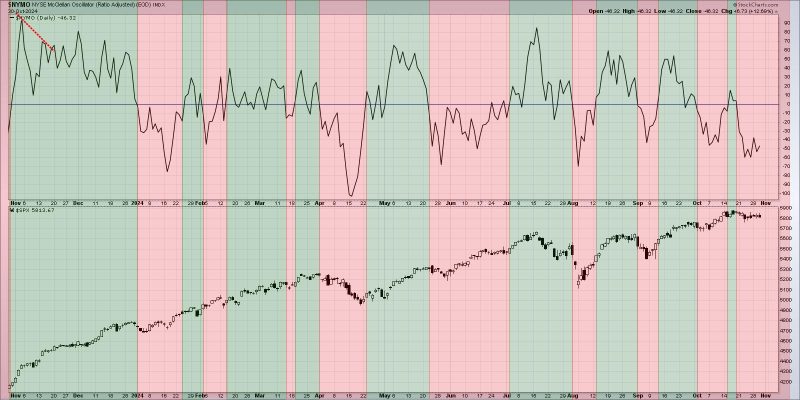The financial landscape is dotted with various indicators that assist in deciphering trends and projecting future trajectories of a specific instrument. Ultimate market trends may be identified by numerous financial analysts using data analysis and trendline research. Breadth divergences, one such form of data interpretation, are highly sought after in financial analysis and especially when it comes to speculation around bull markets trajectories.
The Breadth Divergence phenomenon is one that occurs in market situations where there is a noticeable contrast between the performance of a particular index and the number of stocks that are rising contrary to the ones that are declining. In simpler terms, a particular index could be rising or achieving new heights but if the number of shares that are actually paving the way for that growth are fewer than the ones that are on a downward spiral, then a breadth divergence is said to have occurred.
In the context of bull markets, it’s essential to recognize these discrepancies or divergences, as they potentially signal a change in the landscape. A bull market represents a period of consistently rising market prices, instilling investor confidence, fueling market participation, and fostering expectations of continued growth. However, these cycles are not infinite, and it is within this context breadth divergences play a pivotal role.
The relationship between breadth divergence and a bull market manifests in instances where despite an index like the S&P500 hitting all-time highs, looking behind the curtain reveals that fewer and fewer stocks are contributing to these rises. This lack of broad-based contribution or market breadth highlights a warning sign – a breadth divergence. It indicates that a bull market could be nearing its peak, prepping for the stage of a bear market.
The use of a divergence detector, as some analysts might refer to it, becomes crucial to highlight these turning points and assist market participants in decision-making. In the convoluted world of financial markets, strong undercurrents may often be imperceptible amidst the surface chaos. Hence, the relevance of measures like breadth divergences serves as invaluable tools in figuring out the course of these undercurrents.
To remain ahead of the curve, it’s imperative for investors to maintain a keen eye on these breadth divergences and interpret what they might be foreboding. Despite the overall bullish trend of the market, if the number of declining stocks outnumbers the ones that are climbing, it signals a market breadth deterioration. This divergent behaviour warrants caution and demands strategic action – be it reframing investment decisions, replacing complacent optimism with alert observation, or preparing for potential market corrections.
Nevertheless, while breadth divergences can act as vital signals, they are not foolproof indicators. Like most signs in the financial sphere, they require accurate interpretation and should not be relied upon in isolation. They should be viewed in conjunction with other market indicators and economic factors before shaping a comprehensive view of the market.
In essence, the occurrence of breadth divergences in a market, particularly a bull market, embodies potential warning signs of a shifting financial terrain. Amid the tantalizing allure of a soaring index, these divergences call for discerning perception to recognize the fluctuations that might be lurking underneath. Even as they provide a glimpse into potential market momentum shifts, the key lies in perceptive understanding, strategic response, and adaptive resilience to these market signals.
